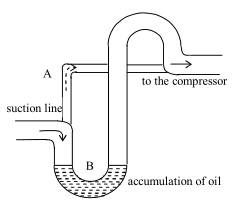Hand control of excitation is difficult so use is made of an automatic voltage regulator (AVR) . The...
AVR consists basically of a circuit fed from the alternator output voltage which detects small changes in
voltage and feed a signal to an amplifier which changes the excitation to correct the voltage. Stabilizing
features are also incorporated in the circuits to avoid ‘hunting’ (constant voltage fluctuations) or
overcorrecting.
The statically excited alternator has a static excitation system instead of a d.c. exciter. This type of
alternator will more accept the sudden loading by direct online starting of large squirrel cage motors. The
static excitation system uses transformers and rectifiers to provide series and shunt components for the
alternator field, that is, it is compounded. Brushes and sliprings are used to transfer the current to the field
coils which are mounted on the rotor. The terminal voltage from the alternator thus gives the no-load
voltage and the load current provides the extra excitation to give a steady voltage under any load condition.
The compensation necessary for speed variation requires that a voltage regulator be also built into the
system.
The brushless high speed alternator was also developed to eliminate d.c. exciters with their associated
commutators and brushgear. The alternator and exciter rotors are on a common shaft, which also carries the
rectifiers. The exciter output is fed to the rectifiers and then through conductors in the hollow shaft to the
alternator field coils. An automatic voltage regulator is used with this type of alternator.
参考解析:
1. The underlined word ‘Which ’ in the second sentence refers to_______.
A. the alternator output voltage
B. the detecting circuit in AVR
C. the amplifier in AVR
D. the signal in AVR
2. Concerning the statically excited alternator, which statement is NOT true?
A. It has no d.c exciter
B. It is more able to carry sudden heavy load
C. It is excited in a compounded way
D. It will have no excitation when no load.
3. Concerning the brushless alternator, which statement is NOT true?
A. It has no brushes but have to have commutators.
B. The alternator and the exciter have a common shaft.
C. The AVR is still incorporated with it.
D. The shaft is hollow.
4. Which is/are the common component(s) for both brushless and brushed generators?
A. Amplifier
B. Transformer
C. Commutators
D. Rectifiers


 百度扫一扫练题
百度扫一扫练题
 关注千题库公众号
关注千题库公众号








